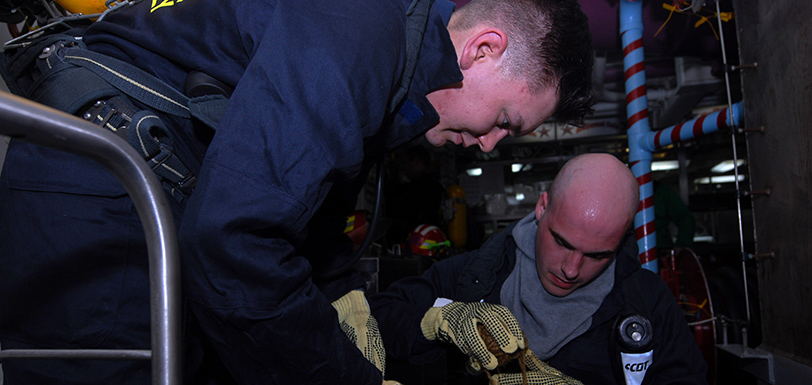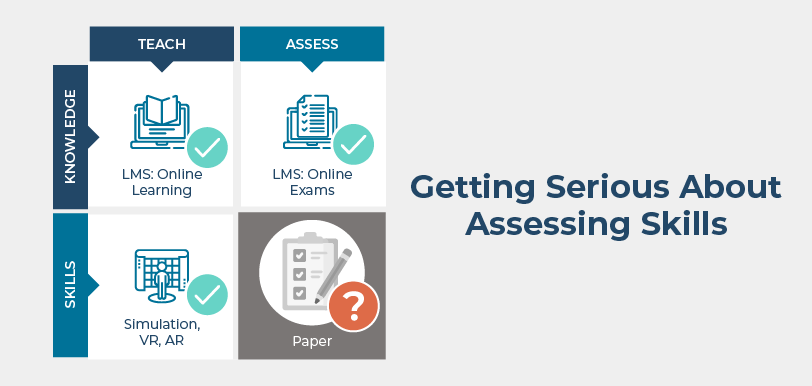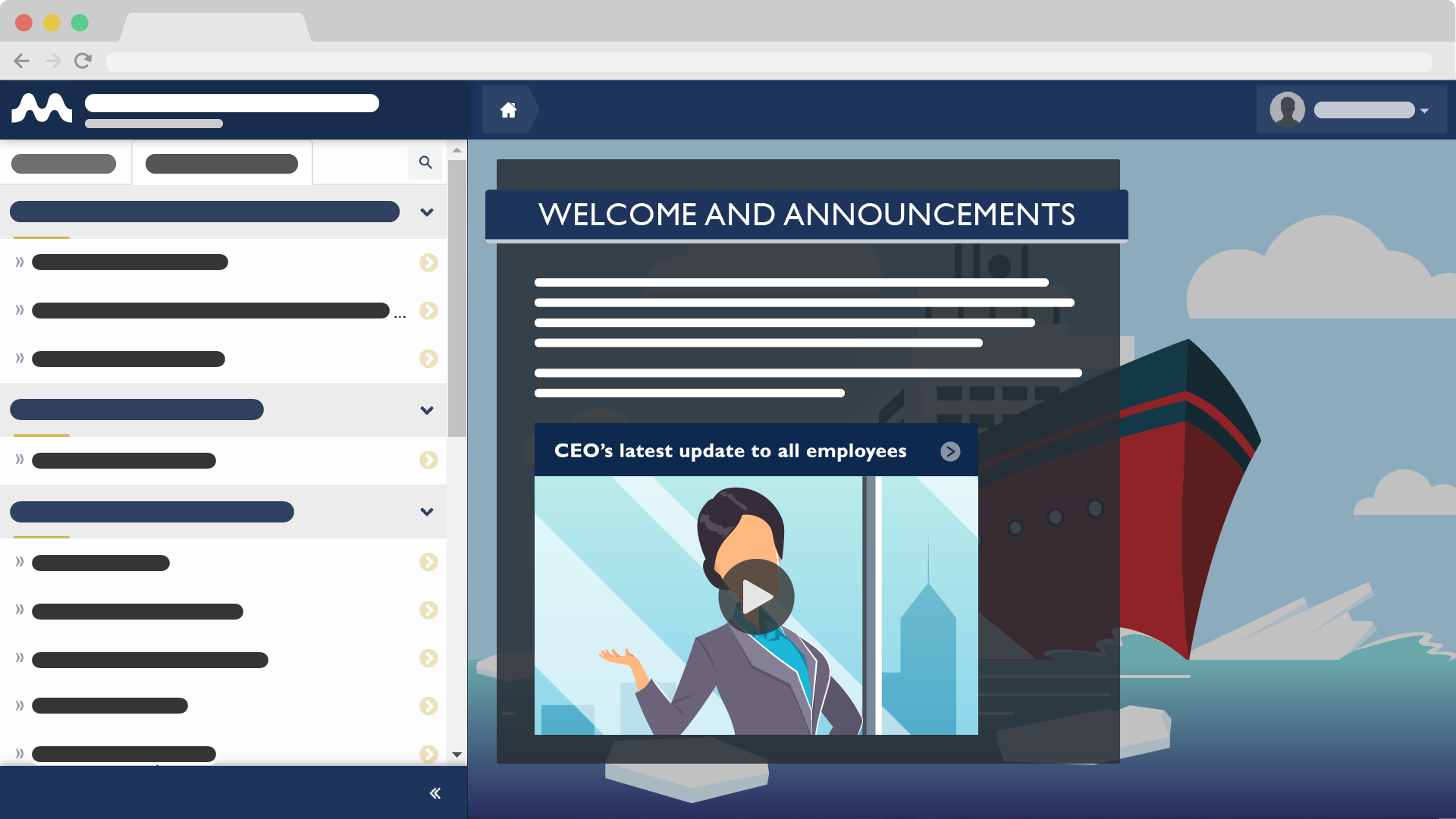Is Job Shadowing a Good Familiarization Technique
May 12, 2016 Murray Goldberg 0 Maritime TrainingIntroduction
In this post, I discuss the strengths and limitations of job shadowing. Since job shadowing is a common training and familiarization practice, I am not sure how many friends I am going to make with this post. However, while working with the British Columbia Ferry Services I have seen the evidence first hand how a move toward a more formal educational process can improve familiarization experiences and outcomes. I think that most readers can agree that job shadowing, despite some benefits, does have some limitations when used as a primary training technique.
Let me clearly state at the beginning that I am not suggesting that job shadowing has no place in maritime training. In fact, it is an irreplaceable technique when applied in the right contexts. The problem is when job shadowing is used as either the main, or even the sole, technique for onboard training and familiarization. As common as this practice is, our organizations are suffering for it in terms of reduced performance and reduced safety.
Let’s start by looking at job shadowing’s positive attributes.
Positive Attributes
Using job shadowing before training begins is an outstanding technique for a prospective employee to find out what a job “is like”. There may be no better way for someone to understand what it is like to, for example, be a deckhand, than to follow a deckhand around while they work. This gives the prospective employee a first-hand view of the flow of the work, the duties performed, the inherent job responsibilities and so on. It also provides the opportunity for interaction and for the working deckhand to answer questions about their job and career. Used in this way, job shadowing is the best available means for someone to determine whether they are likely to enjoy the job or even a career in the maritime industry.
Another excellent use of job shadowing comes after more formal training or familiarization is complete. Here, it can be used to consolidate knowledge and skills learned during training. Once an employee is trained for a particular position, job shadowing can be used to gradually bring the employee “on line” as a full and independent member of the crew. They can employ their new-found knowledge and skills under the watchful eye of a more experienced employee and fill in any knowledge gaps. Job shadowing is an excellent way of easing a new employee into their job, giving them hands-on experience without compromising safety, and ensuring that they are fully prepared.
Having said this, job shadowing has its weak spots. Let’s examine those.
Limitations of Job Shadowing
The phrase “the right tool for the right job” comes to mind here. As with any valuable tool, job shadowing is useful when applied to the right “job”. The limitations of job shadowing begin to appear when it is used to accomplish a task for which it is not well suited.
In order to understand those training activities that job shadowing is not well suited to, let’s first remind ourselves what we are actually referring to when we use the word “training”. I suspect we will all agree that:
- There is a difference between knowledge acquisition and skill acquisition,
- Both knowledge and skills are required for safe operation in a maritime environment, and
- Training and assessment techniques appropriate to one (knowledge or skill acquisition) are not necessarily appropriate to the other.
As a simple example, closing the bow doors on a ferry in order to prevent water from flooding the car decks is a skill that can easily be learned by job shadowing. However, job shadowing is not a good technique to impart knowledge such as: the implications of a flooded car deck on that vessel, the weather conditions under which additional chains may be required, or what to do in the event of water ingress.
Of course, in a high quality job-shadowing experience the person being shadowed explains all the implications to the trainee, details all related systems and required information, and verbally assesses the trainees understanding before moving on. The problem is that this “high quality” shadowing experience is rarely the norm.
It is more common that:
- The skills and knowledge of the person being shadowed are highly variable. This is a bigger problem when this person is made responsible for training others.
- Even if the person being shadowed is highly skilled and knowledgeable, they may be very poor at teaching others. They may not be interested in training, be a poor trainer or communicator, or they may view training as a burden to be done as quickly as possible.
- Job shadowing is not well suited for tracking and analysis – which means that continuous improvement is almost impossible. Without a proper assessment, and preferably a skilled trainer at the helm, we cannot measure how well the trainee learned, which knowledge and skill gaps remain to be filled, and how the training program can be improved.
- Possibly the worst limitation of job shadowing is that it makes it difficult to train to company-vetted best practice. Every employee has, to some degree, their own way of doing their job. Job shadowing passes on their way, which may not be best practice. In the best case, this leads to inconsistency in operations. In the worst case, this is an excellent way to pass along unsafe practices from one generation of employee to another – likely getting worse with each passing generation like a bad game of “telephone”. In either case, the company does not control what is taught and how well it is taught. This is unacceptable.
Even if none of the above problems existed in job shadowing, the simple fact remains that it can be difficult for the person being job shadowed to teach and work at the same time. This is especially true in busy times or poor conditions.
What are the alternatives when it comes to knowledge acquisition?
The Alternatives
As I mentioned above, job shadowing is a highly useful technique for tasks it is well suited. But alternatives are required to cover those tasks for which it is not well suited. These alternatives can include:
- Supply company-vetted training or familiarization information to the candidate and test it before they step on board. Make this information available throughout the career of that mariner (updated as policies change).
This is a very powerful way of providing a new employee with a base of company-vetted knowledge, before learning the skills based on that knowledge. This ensures they understand the “why” in addition to the “how”, and that bad habits are less easily passed from employee to employee. It also makes acquiring skills more efficient because the trainee has context and understands the skill conceptually before seeing its practical application during on-board familiarization. - Use trained and dedicated trainers.
Rather than shadow whomever is on duty at the time of training, it is more effective to use a trainer who enjoys training, is current on company best practice, and who is detached to focus fully on the trainees despite prevailing conditions. This greatly reduces variability in training, and may be cost neutral (or even reduce costs) because skills and knowledge will be acquired much more quickly than they would be through job shadowing.
Conclusion
The section on alternatives, above, is quite short due to the length of this article and the fact that I have and will write more on that topic in other articles. In the meantime, it is my hope that all of you, expert mariners and possibly even expert trainers, weigh in on the merits and demerits of job shadowing. What is your take on job shadowing?
Follow this Blog!
Receive email notifications whenever a new maritime training article is posted. Enter your email address below:
Interested in Marine Learning Systems?
Contact us here to learn how you can upgrade your training delivery and management process to achieve superior safety and crew performance.






